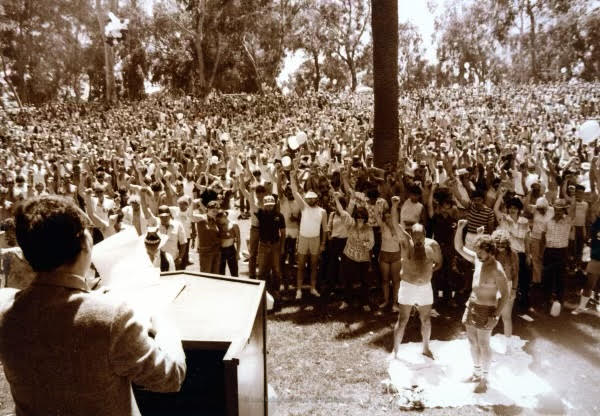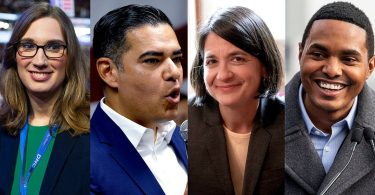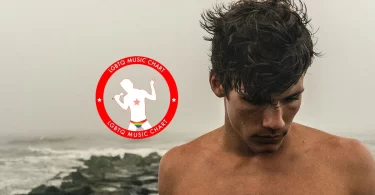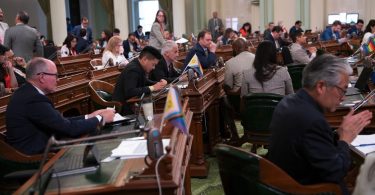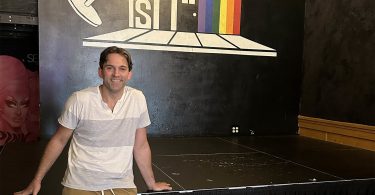Nicole Murray Ramirez
This shows the 1985 San Diego Pride Parade.
My San Diego story began at the Pride Parade of 2015. That was the year that it literally rained on the parade. What I saw that day was a beautifully diverse community of people coming together, making the most of torrential downpour. It was hectic, but there was love, joy and community. It inspired me to move here.
I’m one of millions of people who have been inspired by the Pride Parade and this year is especially significant because we are celebrating the 50th anniversary of the first Gay Pride March in San Diego. To honor our community’s roots and to recommit ourselves to the work ahead, the theme for San Diego Pride this year is “Making History Now.”
We all owe a great debt to those who came before us and as such the Heroes of Pride honorees are San Diego Pride’s Founding Leadership, a collection of trailblazers who helped make Pride what it is today. Those trailblazers include four individuals who played pivotal roles in the first gay pride marches — Tom Homann, Jess Jessop, Jeri Dilno and Nicole Murray Ramirez, amongst many others who shaped our movement.
Tom Homann was a civil rights attorney who specialized in the First Amendment, police misconduct and LGBTQ+ cases. Jess Jessop was a Vietnam veteran who co-founded Lambda Archives; he also was the first executive director of the Gay Center for Social Services (which would become The San Diego LGBT Community Center). Both Tom and Jess passed away from AIDS-related complications in the 1990s.
Jeri Dilno, who passed away earlier this year, served as the first female executive director of The San Diego LGBT Community Center and played a critical role in helping San Diego Pride professionalize into a financially stable organization in 1989. Today, Nicole, a nationally recognized gay and Latino activist, is the only surviving member of this iconic group.
I recently sat down with Nicole to hear his reflections on our movement because, as he often reminds us, “a community, indeed a movement that doesn’t know where it came from and whose shoulders it stands on, doesn’t really know where it is going.” Back in the ’70s, Nicole was, in his words, “a pre-operative transsexual who had nothing to lose” when advocating for civil rights. At that time, the nation was experiencing its first highly visible display of gay rights by way of marches inspired by the Stonewall Riots.
San Diego was a very different place than it is today and being part of the LGBTQ+ community was not safe. Homosexuality, after all, was illegal in California until 1976. Churches condemned and rejected members of our community. Gay bars were being raided by police, people were arrested for dancing with members of the same sex or for cross-dressing, and you could be institutionalized simply for being gay or trans.
In 1974, Nicole, along with Tom and Jess, went to San Diego police headquarters to apply for a permit for San Diego’s first gay pride march. They were resoundingly rejected. A police sergeant declared, “There will never be a gay pride march in San Diego!”
Nevertheless, a march did happen. Nicole commends the bravery of those who marched that year, including student organizers from SDSU and people in the military. They had everything to lose — their families, jobs and freedom. The following year, Tom and the ACLU threatened to sue the city and thus, in 1975, the first permit for a pride parade in San Diego was secured. However, the LGBTQ+ community still lacked broad political support and for many years ahead local elected officials, including mayors, refused to meet with activists and organizers.
A lot has changed since then. The parade is now one of the largest pride parades in the country, drawing 250,000 people annually.Parade contingents now consist of hundreds of LGBTQ+ serving nonprofits and community organizations, clubs and associations, elected officials, supportive faith leaders and organizations, military veterans, and even city and county first responders. Mayor Todd Gloria is now serving as the first person of color and first out gay mayor in our city’s history.
A key to our community’s progress lies in our coalition building. No civil rights movement can succeed in isolation. Over his decades of advocacy, Nicole recalls civil rights leaders like Cesar Chavez and Jesse Jackson supporting the LGBTQ+ community, lesbians coming together to support gay men during the AIDS epidemic, and cisgender allies speaking up for our transgender and nonbinary siblings.
In many ways though, we are seeing history repeat itself. The LGBTQ+ community is facing more threats than ever and hate crimes are on the rise. When I asked Nicole his thoughts on our current political climate, he reflected that, “we have always had struggles, but this year especially, we need people to come out of the closets and into the voting booths in November.”
These key lessons from the Stonewall generation — to value our predecessors, to build coalitions, to stay politically engaged — cannot be ignored. So later this month, when the Pride festivities come around, I implore us to keep our community’s history in mind and commit to fighting for a future free of homophobia and transphobia. That will be my commitment when I march in the parade, rain or shine.
Renner is a communications professional and LGBTQ+ advocate. He lives in University Heights.

